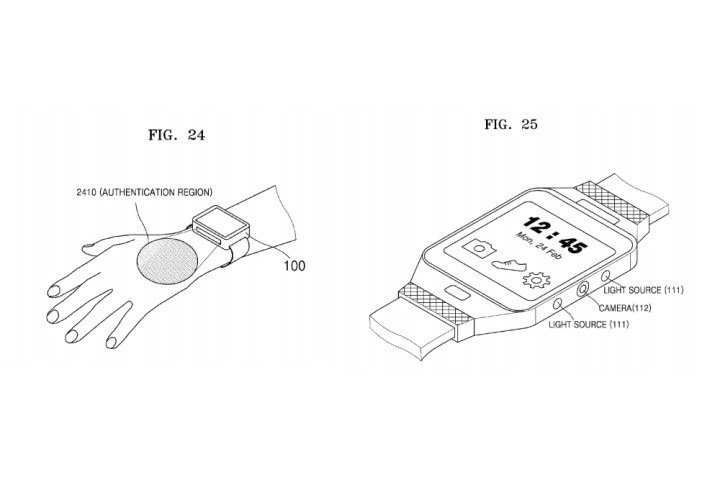
The patent, ambiguously titled “Wearable Device and Method of Operating the Same,” was filed on July 29, 2015, and published on February 4, 2016. The summary describes a wearable device with a sensor that captures a “vein image” of the user, which is processed and used to identify the user. If the vein image captured matches at least one registered vein image, a specific function or application would be run. In other words, it wouldn’t function too differently from a fingerprint sensor.
In the patent, Samsung goes on to describe a sensor that includes an infrared light source and camera. When the infrared light is emitted on the back of a user’s hand, for instance, the camera would capture the vein image.
If a positive vein image identification occurs, it can trigger the loading of a specific user’s music playlist, contact list or credit card payments, for example. The applications could extend to actions like opening car doors or hotel room doors.
As always, patents are never sure bets to make their way to real-world devices. However, the applications for a vein identification sensor on a smartwatch are clear and appealing enough.

